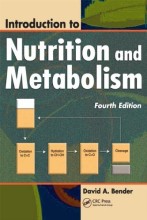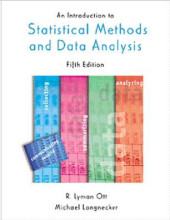NP3 Intestinal phases
38 important questions on NP3 Intestinal phases
What is the function of the Sphincter of Oddi and where is it located?
The pancreas has two different parts, which two?
- Ductule
- Acinus
- contain the digestive enzymes
exocrine pancreas: Pancreatic secretions are simulated by neural (Ach) and humoral (CCK) mechanisms
endocrine pancreas: e.g. Insulin
The duodenal cluster unit regulates entry of ...?
it has an pH meter and an osmolality and nutrient meter. The pH meter secrets secretin and the osmolality and nutrient meter secrets CCK and Nerves. These influence the secretion of pancreatic juices and biliary secretion
- Higher grades + faster learning
- Never study anything twice
- 100% sure, 100% understanding
What does the S cell in duodenal mucosa do?
Measure
What is the difference between the pH of the gastric and the duodenal?
What happens with the osmolality, going from the stomach to the duodenum to the jejunum and ileum?
? Taking isotonic meals is better... Cost less energy ?
Cholecystokinin (CCK) acts primarily via a vagal afferent pathway to integrate the duodenal cluster unit response, in what way does this happen?
- Decreased acid secretion
- Decreased gastric emptying
- Increased pancreatic enzyme secretion
What does the CCK stimulate by both neural and humoral pathways?
CCK mediates fatty acid stimulation of ... And ...
- sphincter of odd pressure is decreasing
- plasma CCK concentration is increasing
- the gallbladder volume is decreasing
- the arrow <----> its content is released into the duodenum
- neuronal and hormonal activation
- the gallbladder volume in the presence of a CCK "A" receptor antagonist is much higher.
- only the neuronal activation
How does the CCK stimulates pancreatic enzyme secretion?
CCK via the blood and CCK via the vagal efferent >> Ach VIP GRP
Microbiële contain enzymes. Name one and where are they located?
These membrane-bound enzymes face the lumen of the intestine, so they reside outside the cell
Duodenal passage alters the physical characteristics of the meal. What is the difference between Antrum and Duodenum?
- suspension of particles in aqueous media (all <2 mm)
- emulsified triglyceri
de
- hyperosmotic
- pH ± 5-6
- protonized protein
- indigestible fiber
Duodenum
- solution of macromolecules
- micellar lipids
- isoosmotic
- pH±7
- solubilized protein
- indigestible fiber
CCK is a hormone that stimulates:
- Pancreatic bicarbonate secretion
- Release of pancreatic enzymes
- Bile production
- All of the above answers
Enterokinase is a:
- hormone of the gut
- pro-enzyme
- endopeptidase
- pancreatic enzyme
For which organ(s) can the venous blood be slightly acidic? (more than 1 answer is potentially possible)
- stomach
- pancreas
- gall bladder
- small intestine
3. Gall bladder
and also a little bit 4. Small intestine
Intraluminal digestion prepares the meal for surface digestion and absorption, in what way?
- for Proteases
- for Amylase
- for Nucleases
- for Lipolytic enzymes
- for
Proteases; trypsin, chymotrypsin, carboxypeptidase A, B
- oligopeptidase and amino acids
- brush border peptidases
- dipeptides, tripeptides and amino acids
- for Amylase
- maltose; limit dextrins; maltotriose
- glucoamylase
- glucose
- for Nucleases; RNAse, DNAse
- nucleotides
- alkaline phosphatase
- nucleosides
- for lipolytic enzymes; lipase, cholesterol esterase, phospholipase A2
- 2-monoglyceride and fatty acids
- cholesterol and fatty acids
- lysophosphatidylcholine and fatty acids
- none
- none
How does the absorption of monosaccharides go?
You also have; SGLTI --> Na+ needed
"starch" is digested by 2 major dual enzymes, which ones?
- Sucrase-isomaltase
- maltase-glucoamylase
- both convert glucose over the membrane
Maltotriose > maltose > a
alfa-limit dextrin inhibits the maltase-glucoamylase
What is the mean carbohydrate absorption form food?
glucose = dextrose --> 100% absorption
Meal glucose is completely absorbed along the human small intestine
How are amino acids, dipeptides and tripeptides absorbed?
there are at least five apical transporters for aa's - each one transports a specific group of aa
What is the mean protein absorption form food?
removal of dietary protein by digestion and absorption occurs throughout the small intestine
The formation of lipid micelle small enough to be absorbed. This is due to the emulsifying action of:
(5)
- Free fatty acids
- Diacylglycerols
- Monoacylglycerols
- Phospholipids
- Bile salts
How does the digestion of fat goes?
Where is the lymphoid system located?
So it does not go via the liver
What is the mean fat absorption from food?
absorption of lipolytic products occurs throughout the small intestine
When is PYY released and what does it do?
Inhibition of meal-stimulated GI functions
- decrease gastric acid secretion
- decrease gastric emptying
- decrease pancreatic secretion
- decreased transit rate
- decrease colonic motility
What are the functional regions of colon
- Ascending colon
- Transverse colon
- Descending colon
- Ileocecal valve
- anal sphincter
Mechanical and chemical stimuli effect colonic responses. How do the following stimulus effect the effector response?
- rectal distention
- intravascular volume depletion
- free fatty acids
rectal distention
- neural (intrinsic and extrinsic nerves)
- conversion of storage motor patterns to propulsive motor patterns and defecation
- intravascular volume depletion
- humoral (aldosterone)
- absorption of ions and H2)
- free fatty acids
- peptide YY
- inhibition of HI secretomotor functions
The colonic response to a meal is initiated by which signals and from where?
- increase proximal and distal motor activity
- increase defecation
Multiple mechanisms account for gas accumulation in the gastrointestinal tract, which mechanisms?
- Swallowed air
- O2, N2
- Acid neutralization
- H+ + HCO3-
- Bacterial fermentation
- CO2, H2, CH4
Which blood flow supplies the alimentary tract?
[arterial splanchnic bloodflow]
Which blood flow supplies the liver
[venous splanchnic bloodflow]
portal vein plays important role
What is the water flow in intestines for 24hr?
- Oral intake = 1500ml
- Salivary glands = 1500 ml
- Stomach = 2500 ml
- Bile = 500 ml
- Pancreas = 1500 ml
- Intestine = 1000 ml
8500 is total presented to
Where in the small intestine and colon does the absorption of water occur?
- 5000 jejunum + duodénum
- 1300 ileum
- 2000 colon
- 200 stool
Mention the 5 sphincters that border compartments of the digestive tract.
Which of them border:
- oesophagus
- small intestine
- stomach
- large intestine
- UES
- LES
- pylorus
- ileo-ceacal valve
- anal sphincter
1. U-L
2. P-icv
3. L-P
4. Icv-as
Which dietary component (or derivative) is NOT digested by brush-border enzymes?
- peptides
- fat and oils
- starch
- DNA
Which dietary component (or derivative) is NOT digested by brush-border enzymes?
- peptides
- fat and oils
- starch
- DNA
Which aspect mainly determines the timespan of arrival of food components at the ileo-caecal valve after a meal?
- rate of oral ingestion
- hardness of diet
- rate of gastric emptying
- rate of small intestinal passage rate
The question on the page originate from the summary of the following study material:
- A unique study and practice tool
- Never study anything twice again
- Get the grades you hope for
- 100% sure, 100% understanding
































